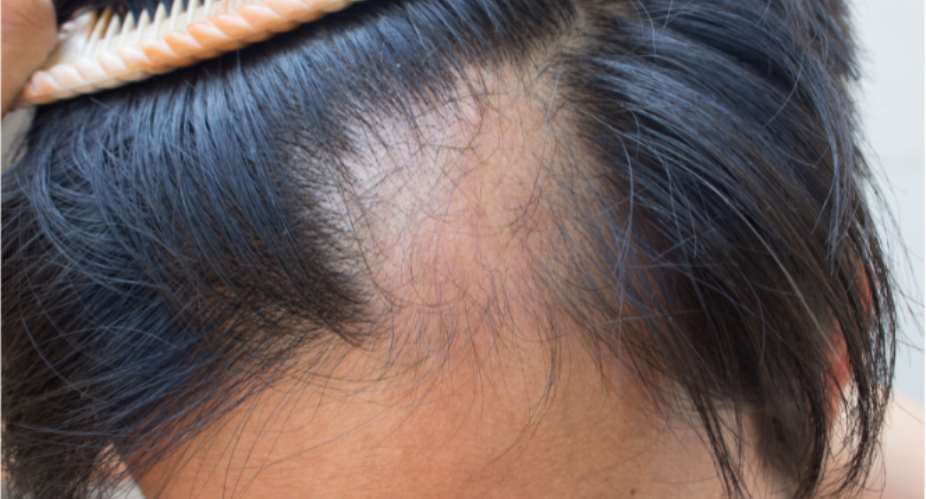While aging is an unavoidable biological process with many influencing factors that results in visible changes to the hair, there is limited literature examining the characteristics of hair aging across the races. Now a new study describes the unique characteristics of hair aging among different ethnicities that the authors hope will aid in a culturally sensitive approach when making recommendations to prevent hair damage during one's life-time.
We have known for decades that the incidence of male pattern baldness increases with age. New research published in the February 2016 edition of the journal Science has shed light on why this is the case. Researchers examining the role of hair follicle stem cells (HFSC) in the hair growth cycle have found that accumulated DNA damage in these cells results in the depletion of a key signaling protein and the progressive miniaturization of the hair follicle (and eventual hair loss).1 The study represents a breakthrough in our understanding of the cell aging process and could open new pathways for the treatment of not only hair loss but other age-related conditions as well.
Background: The Hair Growth Cycle
At any point in time, a hair follicle exists in one of three phases:
- Anagen Phase – this is the “growth” phase in which the hair follicle is actively producing living hair. Anagen can last from two to seven years.
- Catagen Phase – this is a short transitional phase in which hair growth stops, the middle of the follicle constricts, and the bottom of the follicle begins to form the “club.” The follicle also separates from the bloodstream. Catagen lasts two to three weeks.
- Telogen Phase – this is the “resting” phase in which the clubbed hair detaches from the dermal papilla and is susceptible to falling out. Telogen lasts three to four months before hair follicle stem cells initiate a new anagen (growth) phase and the cycle repeats.
Stem Cells and the Hair Cycle
Normally, hair follicle stem cells (HFSC) perpetuate the hair cycle by initiating a new anagen (growth) phase after the telogen (resting) phase. But HFSC, like all cells, age over time. Included in this aging process is damage to DNA strands inside these cells due to spontaneous errors in DNA replication or those due to exposure to sunlight and other insults. While it has been well understood that hair follicle miniaturization occurs as a person ages and that damage to genetic material contributes to the process, the exact mechanism that ties cell aging to the disruption of the normal hair cycle was unknown. The recent study examines miniaturization from cell aging and distinguishes it from miniaturization caused by the effects of DHT.
Results of the Study
The key finding in this new research is that as hair follicle stem cells (HFSC) accumulate genetic damage over time, their store of a signaling protein called COL17A1 is depleted. The depletion of this key protein forces HFSC to differentiate into a common type of skin cell called a keratinocyte. By differentiating into keratinocytes, the population of HFSC gradually shrinks, there are fewer HFSC to initiate the anagen (growth) phase, and the telogen (resting) phase is extended. With a gradually longer telogen phase and shorter anagen phase, the follicle progressively miniaturizes. Eventually, the hair-producing follicle disappears leaving a bald scalp and the keratinocytes, which no longer serve a purpose in the hair growth cycle, are ejected from the skin.1 Click here to view the graphic that illustrates this process.
The authors of the study suggest that restoring COL17A1 levels, or halting their depletion, may prevent this aging-induced hair follicle miniaturization from occurring.1
With perhaps much broader significance, the study confirms the tight linkage between the instability of genetic material in stem cells (that can be due to environmental factors) and the shrinkage and functional decline seen in many organs as they age.
Conclusion
Progressive hair loss is a pervasive problem for males as they age. However, current treatments deal, exclusively, with hormone-induced miniaturization. The discovery of the mechanism behind age-induced miniaturization may result in a new avenue for the treatment of hair loss. More research into methods of boosting levels, or preventing the depletion, of COL17A1 may yield a hair loss therapy that targets this cause of hair loss.





 Lay KPMG audit report on SML-GRA contract before Parliament – Isaac Adongo tells...
Lay KPMG audit report on SML-GRA contract before Parliament – Isaac Adongo tells...
 Supervisor remanded for stabbing businessman with broken bottle and screwdriver
Supervisor remanded for stabbing businessman with broken bottle and screwdriver
 NDC watching EC and NPP closely on Returning Officer recruitment — Omane Boamah
NDC watching EC and NPP closely on Returning Officer recruitment — Omane Boamah
 Your decision to contest for president again is pathetic – Annoh-Dompreh blasts ...
Your decision to contest for president again is pathetic – Annoh-Dompreh blasts ...
 Election 2024: Security agencies ready to keep peace and secure the country — IG...
Election 2024: Security agencies ready to keep peace and secure the country — IG...
 People no longer place value in public basic schools; new uniforms, painting wil...
People no longer place value in public basic schools; new uniforms, painting wil...
 'Comedian' Paul Adom Otchere needs help – Sulemana Braimah
'Comedian' Paul Adom Otchere needs help – Sulemana Braimah
 Ejisu by-election: Only 33% of voters can be swayed by inducement — Global InfoA...
Ejisu by-election: Only 33% of voters can be swayed by inducement — Global InfoA...
 Minority will expose the beneficial owners of SML, recover funds paid to company...
Minority will expose the beneficial owners of SML, recover funds paid to company...
 Prof. Opoku-Agyemang has ‘decapitated’ the NPP’s strategies; don’t take them ser...
Prof. Opoku-Agyemang has ‘decapitated’ the NPP’s strategies; don’t take them ser...
